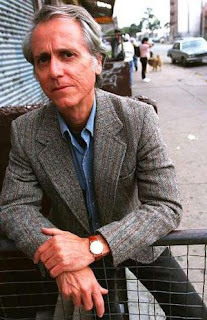Below you will find a timeline of events relating to the history of slavery. In order to understand
Beloved better, it's helpful to get a sense of the historical backdrop in which the novel is taking place.
Slavery Timeline
Courtesy of www.africanaonline.com
1501 African Slaves in the New World Spanish settlers bring slaves from Africa to Santo Domingo (now the capital of the Dominican Republic).
1522 Slave Revolt: the Caribbean Slaves rebel on the Caribbean island of Hispaniola, which now comprises Haiti and the Dominican Republic.
1562 Britain Joins Slave Trade John Hawkins, the first Briton to take part in the slave trade, makes a huge profit hauling human cargo from Africa to Hispaniola.
1581 Slaves in Florida Spanish residents in St. Augustine, the first permanent settlement in Florida, import African slaves.
1619 Slaves in Virginia Africans brought to Jamestown are the first slaves imported into Britain’s North American colonies. Like indentured servants, they were probably freed after a fixed period of service.
1662 Hereditary Slavery Virginia law decrees that children of black mothers “shall be bond or free according to the condition of the mother.”
1705 Slaves as Property Describing slaves as real estate, Virginia lawmakers allow owners to bequeath their slaves. The same law allowed masters to “kill and destroy” runaways.
1712 Slave Revolt: New York Slaves in New York City kill whites during an uprising, later squelched by the militia. Nineteen rebels are executed.
1739 Slave Revolt: South Carolina Crying “Liberty!” some 75 slaves in South Carolina steal weapons and flee toward freedom in Florida (then under Spanish rule). Crushed by the South Carolina militia, the revolt results in the deaths of 40 blacks and 20 whites.
1775 American Revolution Begins Battles at the Massachusetts towns of Lexington and Concord on April 19 spark the war for American independence from Britain.
1775 Abolitionist Society Anthony Benezet of Philadelphia founds the world’s first abolitionist society. Benjamin Franklin becomes its president in 1787.
1776 Declaration of Independence The Continental Congress asserts “that these United Colonies are, and of Right ought to be Free and Independent States”.
1783 American Revolution Ends Britain and the infant United States sign the Peace of Paris treaty.
1784 Abolition Effort Congress narrowly defeats Thomas Jefferson’s proposal to ban slavery in new territories after 1800.
1790 First United States Census Nearly 700,000 slaves live and toil in a nation of 3.9 million people.
1793 Fugitive Slave Act The United States outlaws any efforts to impede the capture of runaway slaves.
1794 Cotton Gin Eli Whitney patents his device for pulling seeds from cotton. The invention turns cotton into the cash crop of the American South—and creates a huge demand for slave labor.
1808 United States Bans Slave Trade Importing African slaves is outlawed, but smuggling continues.
1820 Missouri Compromise Missouri is admitted to the Union as a slave state, Maine as a free state. Slavery is forbidden in any subsequent territories north of latitude 36°30´.
1822 Slave Revolt: South Carolina Freed slave Denmark Vesey attempts a rebellion in Charleston. Thirty-five participants in the ill-fated uprising are hanged.
1831 Slave Revolt: Virginia Slave preacher Nat Turner leads a two-day uprising against whites, killing about 60. Militiamen crush the revolt then spend two months searching for Turner, who is eventually caught and hanged. Enraged Southerners impose harsher restrictions on their slaves.
1835 Censorship Southern states expel abolitionists and forbid the mailing of antislavery propaganda.
1846-48 Mexican-American War Defeated, Mexico yields an enormous amount of territory to the United States. Americans then wrestle with a controversial topic: Is slavery permitted in the new lands?
1847 Frederick Douglass’s Newspaper Escaped slave Frederick Douglass begins publishing the North Star in Rochester, New York.
1849 Harriet Tubman Escapes After fleeing slavery, Tubman returns south at least 15 times to help rescue several hundred others.
1850 Compromise of 1850 In exchange for California’s entering the Union as a free state, northern congressmen accept a harsher Fugitive Slave Act.
1852 Uncle Tom’s Cabin Published Harriet Beecher Stowe’s novel about the horrors of slavery sells 300,000 copies within a year of publication.
1854 Kansas-Nebraska Act Setting aside the Missouri Compromise of 1820, Congress allows these two new territories to choose whether to allow slavery. Violent clashes erupt.
1857 Dred Scott Decision The United States Supreme Court decides, seven to two, that blacks can never be citizens and that Congress has no authority to outlaw slavery in any territory.
1860 Abraham Lincoln Elected Abraham Lincoln of Illinois becomes the first Republican to win the United States Presidency.
1860 Southern Secession South Carolina secedes in December. More states follow the next year.
1861-65 United States Civil War Four years of brutal conflict claim 623,000 lives.
1863 Emancipation Proclamation President Abraham Lincoln decrees that all slaves in Rebel territory are free on January 1, 1863.
1865 Slavery Abolished The 13th Amendment to the United States Constitution outlaws slavery.



















.jpg)










